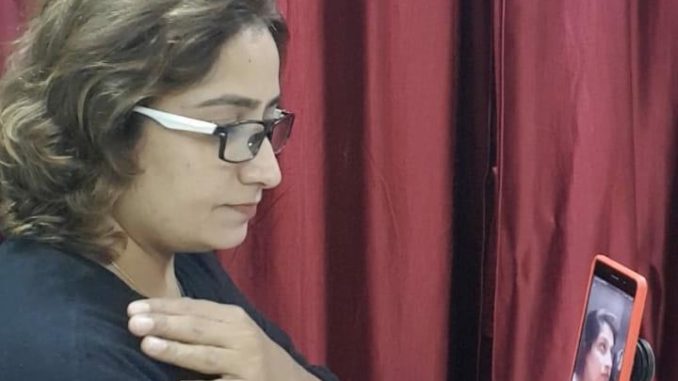
India has seen a rise in telecommunication in the medical fields and experts predict a massive boom in telemedicine across the country. Telemedicine is a term which frequently refers to teleconsultations, telepathology, teleradiology, e-pharmacy and other services that involve the use of digital technology.
The World Health Organization defines telemedicine as “the delivery of health care services, where distance is a critical factor, by all health care professionals using information and communication technologies for the exchange of valid information for diagnosis, treatment, and prevention of disease and injuries, research and evaluation, and for the continuing education of health care providers, all in the interests of advancing the health of individuals and their communities.”
COVID-19 has presented unique challenges for the delivery of medical care and India is stepping up its services in telemedicine to meet these challenges.
A recent report released by EY in collaboration with the Indian Pharmaceutical Alliance states that the teleconsultation market size in India is expected to grow from $100 million to $700 million in the next five years.
“In India, Practo reported five crore (50 million) Indians accessed healthcare services online during the first phase of lockdown between March to May 2020” according to report.
“On an average, a typical user consulted a doctor online twice a month which led to a drop of 67% in in-person visits, as per Practo’s analysis. Fifty-one percent of the overall teleconsultations are from general physician, gynecology and dermatology.”
The report further indicates that leading healthcare chains in India are said to be doing 200 to 500 teleconsults per day, with some doctors doing 8 to 10 consultations per day since COVID-19 pandemic outbreak.
In the first week of June, a 33-year-old woman from India’s financial capital Mumbai twisted her ankle. As the cases of the COVID-19 were soaring, a visit to a hospital for an unrelated matter was risky at best, “all the more because she had delivered a baby two months earlier,” she said. To avoid getting the infection, she connected with a physiotherapist on a Whatsapp video call.
“Her ankle was swollen and the area had turned blue suggesting a possible ligament or hairline tear,” said Dr. Sadiya Vanjara, who then guided her patient with a set of things to do including using an ice pack, compressing to reduce swelling, and elevating to ease the pain.
“Pre-pandemic, the patient would have landed up at my clinic, despite being in pain,” said Vanjara. “But surprisingly, I learned that many consultations are manageable remotely.”
Vanjara said that there are some cases in which evaluating a patient physically is crucial. For example, she called a 28-year-old woman with an elbow fracture for a physical consultation as it was not possible to evaluate the patient’s muscle strength and joint movement virtually.
“Her plaster had been removed after four weeks and physical evaluation was a must for me to draw out a post-fracture rehabilitation program for her,” said Vanjara.
Previous legislation or guidelines for practicing telemedicine has historically been lacking but the COVID-19 pandemic has changed this.
In March 2020, the Board of Governors vested with the powers of the Medical Council of India issued telemedicine practice guidelines allowing doctors to consult using various means of technology and digital platforms.
“The Registered Medical Practitioners should exercise their professional judgment to decide whether a telemedicine consultation is appropriate in a given situation or an in-person consultation is needed in the interest of the patient,” the guidelines stated. “They should be reasonably comfortable that telemedicine is in the patient’s interest after taking a holistic view of the given situation.”
“Consulting patients over the phone is not new,” said general physician Dr. Deepak Baid, who is a president of the Association of Medical Consultants in Mumbai. “However, teleconsultations are now happening in a more structured manner. Video conferencing with patients is now done routinely as it helps the doctors analyze the patient’s condition and offers assurance to him.”
The concept of telemedicine may be challenging for India’s rural and tribal populations who have little connectivity or literacy.
“The government will have to boost the infrastructure required for telemedicine,” said Dr. Abhijit More, a public health activist based in Pune. “If implemented properly, telemedicine can help in areas where there is an acute shortage of doctors, such as public hospitals”.
Some pharmacists and other medical experts in India are beginning to alert the government that it should carefully amend the March 2020 guidelines allowing the practice of teleconsultation to address any issues in regard to abuse when it comes to prescribing psychiatric drugs through telemedicine consultation.
“Data safety is also a big issue,” said More. “Ensuring the confidentiality of patient information is a must.”
Cases of mental health and complex medical-legal issues may pose an even bigger challenge that will require medical and legal advice for specifically thought-out guidelines.
(Edited by Siddharthya Roy and Diane Walsh.)
The post Record Rise in Telemedicine Consults in India appeared first on Zenger News.
